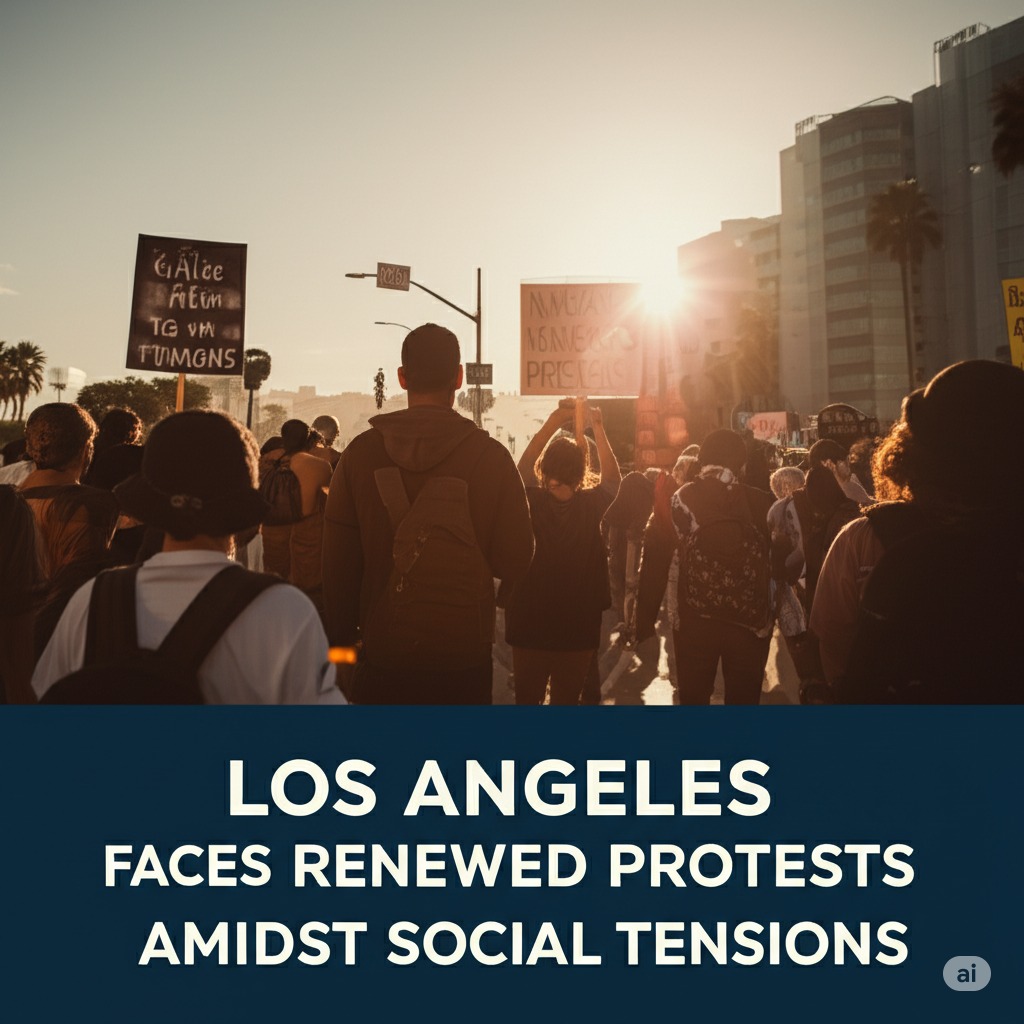Los Angeles Faces Renewed Protests Amidst Social Tensions
Published on June 6, 2024 | Generated by AI
 🤖 AI-generated Image
🤖 AI-generated Image
Why It Matters
Los Angeles, a sprawling metropolis often at the forefront of national social and political movements, is once again experiencing significant protests. These demonstrations reflect deep-seated tensions over issues such as police conduct, economic inequality, and housing affordability. The current wave of activism involves a diverse coalition of community groups, civil rights organizations, and concerned citizens, putting pressure on city officials and law enforcement to address long-standing grievances. What's at stake are fundamental rights, public safety, and the future direction of one of America's largest and most diverse cities.
Background & Timeline
Los Angeles has a long and complex history of civil unrest and protest, dating back decades. Significant periods include the 1965 Watts Riots, sparked by police brutality and racial injustice, which highlighted systemic issues of poverty and discrimination in South LA. Decades later, the 1992 Los Angeles Uprising, following the acquittal of police officers in the beating of Rodney King, erupted into widespread civil disorder, bringing national attention to issues of police accountability and urban inequality. More recently, LA has been a focal point for Black Lives Matter protests and demonstrations related to immigration policies, housing crises, and labor rights, demonstrating a continuous thread of activism responding to perceived injustices and systemic challenges within the city.
What’s Happening Now
- Activists and community organizers have staged multiple demonstrations across the city this week, focusing on police reform and accountability. These actions have included marches to LAPD headquarters and sit-ins at key government buildings.
- Reports indicate several confrontations between protesters and law enforcement, resulting in arrests and minor injuries. Authorities state arrests were made for unlawful assembly and failure to disperse after warnings.
- Counter-protests have also emerged in some areas, leading to heightened tensions and requiring increased police presence to maintain order.
- Local politicians and City Council members have issued statements acknowledging the protests, with some calling for dialogue and others emphasizing the need to maintain public order.
- Specific demands from protest groups include calls for defunding the police, investing in community programs, and addressing the city's escalating homelessness crisis.
What Could Happen Next
-
1. De-escalation and Dialogue – Continued dialogue between protest leaders and city officials could lead to a reduction in tensions and the potential for policy negotiations. This outcome depends on the willingness of both sides to compromise and find common ground, potentially leading to incremental reforms and a decrease in street-level confrontations.
2. Sustained or Escalating Protests – If protesters' demands are not met or if there are further incidents involving police conduct, demonstrations could continue or even intensify. This scenario carries the risk of increased clashes between protesters and law enforcement, potential property damage, and further disruption to city life, possibly impacting public opinion and political stability.
3. Policy Change and Reform – Significant and sustained pressure from protests could compel the city government to enact substantial policy changes related to police practices, budget allocations, or social services. While challenging due to political inertia and competing interests, this outcome is possible if the protests mobilize sufficient public support and political will, leading to lasting impacts on city governance and community relations.
This article is generated using AI-assisted summaries and verified timelines.
